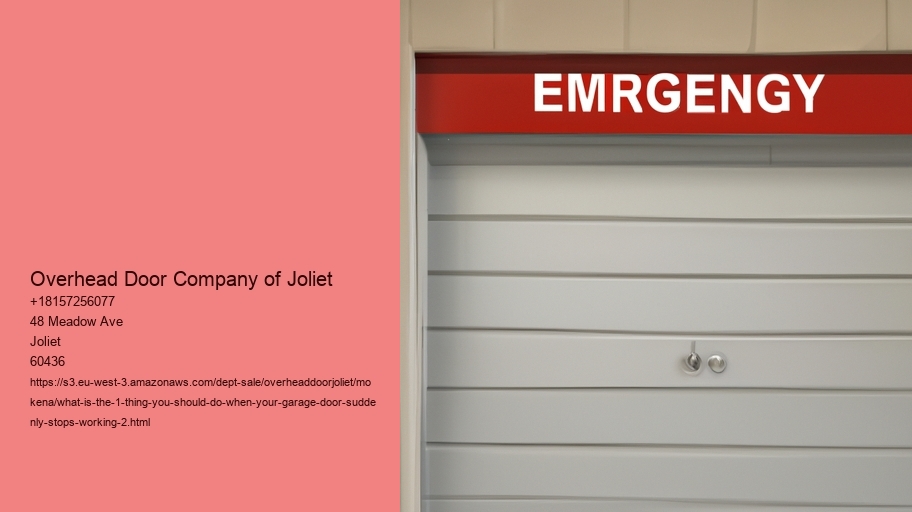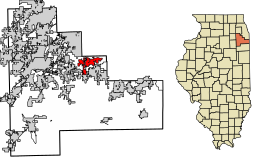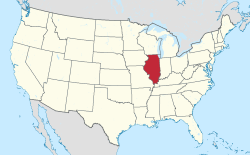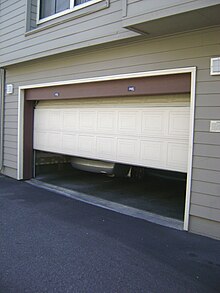What kind of garage door Opener and Door Do You Have? What do you do when your garage door suddenly stops working? .
It is crucial to know the garage opener and door you have before you can start troubleshooting.
Garage doors are generally classified into different categories based on their style and operation.The most commonly used varieties are roll-up, sectional and tilt-up doors.Sectional doors are made up of panels that are joined by hinges, allowing the door to open and close by bending as it opens and closes on the vertical track.Roll-up doors, typically seen in commercial spaces, are constructed from slats that roll up into a coil.
The tilt-up door, on contrary is a solid single piece that opens by tilting inward and up.Belt-drive garage door openers have a lower noise but they use the rubber band instead of chain. They're a fantastic option for garages that have attached garages. Garage door openers with screw-drive use a steel threaded rod for moving the garage door. This is the perfect combination of noise and cost.
The next thing to do is to inspect the garage door opener and identify the type. Check the breaker and plug to make sure that the opener is running. Inspect the release cord for manual operation and make sure it's not pulled. This could cause the door to be removed from the opener. Check the rollers and tracks of the door for damage or obstructions. Clean up any debris.
If necessary, lubricate the moving parts. Insufficient lubrication could cause them to jam or stick.If the door doesn't function, try resetting the opener.This can usually fix electronic glitches or faults.Consult your opener's manual for specific reset instructions, as this process can vary between models.Many modern openers have a reset button, while others may require unplugging them and plugging back in.
In some instances it could be more complex for instance, a damaged spring or worn-out motor which will require expert assistance.Springs are subject to significant tension and can be dangerous to repair without the proper equipment and knowledge.
When the garage door stops functioning or is not working, it's best to consult a professional.
Examine for debris or obstructions.
It can be a bit frustrating and perplexing when your garage door stops working at a moment's notice, especially if are using it daily.
This simple but effective step is a great way to determine the issue, and then restore the functionality of your garage.Even a small obstruction could cause a problem for your garage door to stop working as it should.
Begin by visually examining the tracks that run along both sides of the door.Look for any obvious obstructions or buildup of debris.If you spot anything odd like a twig or a stone stuck in the track, carefully remove it.
The issue might not always be apparent. To check whether the issue is there, you can run your hands across the track. Also, ensure that the tracks are properly aligned, since misalignment may result in the door jam.Next, inspect the rollers as well as hinges.These components should be able to move without resistance.If they're squeaky or stuck, it might be the result of accumulation of dirt or rust.In such cases cleaning and lubricating them will often solve the issue.Use a gentle cloth or brush to clean any dirt and apply a suitable oil to make sure that the parts move smoothly.
Examine the area around the door. Sometimes items in the garage may be moved or fall, thereby making it difficult for the door to move. Check to ensure that the garage area is clear of obstructions, and that there are no objects that could block the door.
If, after clearing any obvious obstructions, your door continues to refuse to open, consider checking the sensors.
The sensors on modern garage doors can malfunction in the event that they're dirty or if they are not aligned correctly.If you are confronted with the garage door that abruptly isn't functioning, checking for debris or obstructions is a sensible and usually efficient first step.It will require only a few tools and expertise, yet it can save time, money and the hassle of calling a professional to fix what could be a straightforward fix.By maintaining a clear path and
Examine the Remote Control and Wall Switch
If the garage door stops working and you notice it, it could be an unexpected issue that can disrupt your regular routine.In such situations it's normal to feel an urgency to get the problem fixed quickly.One of the initial and most effective steps you should consider is to check the remote control as well as the wall switch.
These components are often the reason for garage doors that aren't responding. performing a thorough check could save you time and avoid unnecessary costs.First, consider the remote control.This handheld device is your primary tool for operating the garage door without direct physical interaction.Over time, remote controls can experience issues such as drained batteries, signal interference, or even internal damage.Start by replacing the batteries with new ones.It might seem simple, but dead batteries are a common reason for a garage door not responding.If the problem persists after replacing the batteries, try reprogramming the remote according to the manufacturer's instructions.Additionally, ensure that the remote is within the recommended range and that there are no obstructions blocking the signal.
Then, shift your focus towards the wall switch. It is also a important component of the garage door's design.
If you are comfortable you are comfortable, then open the switch to inspect for damaged or disconnected wires.The wall switch or remote control might be working correctly, but the door is not yet responding. This could indicate problems with the garage opener or related components, such as sensors or door tracks.
It is possible to eliminate these issues before you move on to more intricate troubleshooting.The final step is to examine the remote control and wall switch whenever your garage door stops working is a sensible and simple approach.By checking these parts first, you can quickly identify if the issue is in these easy to access parts or if further examination is needed.This initial examination will not only help you save time, but also gives security knowing that you've taken the appropriate steps to identify the problem correctly.
Manually Test the Door Balance
If your garage door suddenly stops working and then it stops working, it can be annoying as well as inconvenient.The garage door is an essential part of your home, providing security, protection from elements, as well as easy access to your vehicle as well as storage space.
The first step you must make when confronted by a malfunctioning garage door is to manually test the door's balance.This simple, yet powerful procedure can help diagnose potential issues and help prevent further damage to the door or its parts.The balance of a garage door is essential for its proper operation. A door that is not balanced can create more serious issues such as misalignment, broken springs.
To manually test the door balance, start by disconnecting the garage door opener.
The majority of garage doors come with the release mechanism, which is usually the handle or red cord which allows you to disconnect the door from the motor.Once the door is unlocked and lifted manually, you can lift it to about waist height, and then release it.A well-balanced door will remain stationary or move slowly.If the door drops rapidly or shoots upwards this indicates an imbalance.It is best to contact professionals to help adjust the springs to ensure that your garage door is balanced. This will not only solve the problem, but also increase the lifespan and reliability of your door.
In the end, testing manually the door balance is the first step when your garage door suddenly stops functioning.
This method helps identify the root of the problem, which could be in the balance of the door or elsewhere within the system.By being aware of the importance of balance in your door and dealing with any issues immediately to prevent further damage and ensure your garage door runs without issue and in safety for decades to follow.Review the Tracks and Rollers.
If you're confronted with a garage door that is suddenly refusing to operate, your first instinct is to fear for your life or to think of the most difficult technical issues.However usually, the solution is a simple check of the tracks and rollers.This essential check will reduce time and costly repair costs making it the primary that you must prioritize when your garage door stops functioning.
What is the #1 Thing You Should Do When Your Garage Door Suddenly Stops Working? - water slide
- hinge
- water slide
- sand
The tracks and the rollers of the garage's operation system are crucial. The tracks comprise the metal rails that control the door when it opens, and the rollers run on the tracks.
These parts can be worn out, dirty or misaligned as time passes. This can lead to issues with operation.Begin by examining the track for any obstructions. Dust, grime and even small particles could get accumulated, causing the rollers to struggle to travel along the path. Cleansing the tracks with a moist cloth could solve this issue.
The next step is to check the alignment of the tracks.Tracks should be perfectly aligned and parallel to each other.If they look bent or not in alignment, the door could jam.You can gently press the misaligned parts back into position using an rubber mallet.However should the damage is significant the best option is to call a professional to realign the tracks properly in order to ensure safety and functionality.
It is also important.Over time, the rollers could wear out or become damaged especially if made from plastic.
Examine for indications of wear and tear such as cracks or chips.If the rollers appear damaged, you should consider changing them out with brand new ones.Metal rollers bearing ball bearings are more likely to provide more durability and smoother operation. Applying silicone-based lubricants can lower friction and wear. It is important to oil the hinges as well as the springs to ensure that your garage door works efficiently.
What is the #1 Thing You Should Do When Your Garage Door Suddenly Stops Working? - hinge
- ITT Technical Institute
- International Standard Book Number
- talk show
In conclusion, examining the tracks and rollers is a sensible first step if your garage door suddenly stops working.It's simple procedure that will often reveal and fix the most common issues.By checking that the components are in good condition, aligned and well-lubricated you can frequently get your garage door back to its full function without having to make costly repairs.
It is important to check and maintain regularly these parts can also prevent further malfunctions, which can extend the life of your garage door system.Verify for visible damage, or wear
If garage doors stop functioning, it could be very frustrating and aggravating particularly when you are in the process of leaving or trying to protect your home from the evening.While there may be a variety of reasons for the malfunction but one of the most immediate and practical actions to do is examine the door for obvious damage or wear.This first inspection will usually reveal the root cause of the issue, which allows for a quick and efficient solution.
The garage door is an intricate system that is made up of a variety of components, including springs, cables and rollers every one of which plays an important role in the seamless operation.Over time, these parts will wear out due to regular use and exposure to environmental factors.
You can easily spot obvious flaws by performing an examination of the area.Begin your inspection by examining the springs that are essential for lifting and lowering of the door.Look for any signs of rust, breakage, or misalignment.A broken or worn spring could make the door inoperable, and it is essential to fix the problem promptly.Next you should look at the cables and look for damaged or frayed strings that could hinder the door's movement.Similarly, inspect the tracks and rollers for any debris, dents or obstructions that could be hindering the door's path.
Another area to focus on is the door itself.Look for any obvious dents, bends, or warpings that could affect its stability and alignment.Pay particular attention to the weather stripping that is located at the end of the door because a damaged strip may cause the door to not seal properly.
In addition, ensure that the door's sensors are in good condition and aligned because misalignment or dirt could hinder their work and result in the door not functioning.An inspection of the visuals is helpful, but it's important to keep in mind that not every issue is immediately apparent. If you don't find any obvious signs of damage or wear, you may need to consult with a technician to diagnose the issue.
This strategy will not only aid in identifying the problem more quickly, but it will help you take steps to repair the proper functioning of your garage door.
If you are proactive and alert to your garage door's needs, you can guarantee the longevity and security of the garage door.Examine for Springs and Cables
It can be frustrating when the garage door stops functioning. You should check the springs and cables. These components are vital for the functioning of your garage and are the most significant reason for a broken garage door.
The springs play a crucial role in the operation and smoothness of your garage by neutralizing the load. There are two major kinds of springs: extensions and torsion. The torsion springs sit above the garage, and they twist in order to store energy. Extension springs, on the other hand are installed on either side of door and can stretch to supply the required force.
The springs could get worn out, break or lose tension, causing operational issues.The same is true for cables since they work with the springs to lift and lower the door.They are generally made of steel, and are made to withstand high tension.However they may suffer due to wear and tear, fray or snap due to the enormous pressure they're under.A broken cable could result in the door becoming unbalanced or become completely inoperative.
In the process of assessing springs and cables, start by visually looking at them.Look for indications of rust, wear, or fraying.If you spot a broken spring or cable you should avoid using the door until the issue is solved, since pushing it could cause more harm or lead to an accident.If the springs appear intact however the door is not working, it could be that they've lost tension and require adjustment.
It's crucial to emphasize security when working with garage door components.
The springs and cables are under tension and could cause serious injuries. If you do not have experience in garage door repairs, it's better to speak with a professional. They will have the tools and expertise needed to safely fix or replace these parts. This ensures that your garage door operates correctly and safely.In conclusion, when your garage door suddenly stops working, assessing the springs and cables is a key step in diagnosing the problem.Understanding their role and potential issues can help you determine whether a simple adjustment is needed or if professional intervention is required.Taking prompt action not only restores functionality but also ensures the safety and longevity of your garage door system.
You Need to Call a Professional Technician
Your garage door can suddenly stop working and cause you to lose time. It could expose your home to danger.
While it might be tempting to get the tools and attempt a do-it-yourself fix but the best option is to think about calling an experienced technician.This option not only assures your safety but also offers a more effective and lasting solution to the issue.Garage doors are complex systems composed of various components such as springs, cables, tracks, and electronic parts.Each of these elements plays a crucial role in the door's operation, and a malfunction in any part can cause the entire system to fail.Without proper knowledge and experience, attempting to fix these issues can be dangerous.For instance, garage door springs are under high tension and can cause severe injury if handled improperly.Professional technicians are trained to deal with these risks safely, using the right tools and techniques to handle repairs.
In addition, a technician who is a professional has experience and expertise that an average person does not possess.
They can quickly diagnose the issue and identify whether it's a minor problem, like a misaligned track, or something more serious, like a broken spring.This expertise not only saves you time but also prevents the potential for further damage that can occur with incorrect handling.Professionals also have access to high-quality parts and can ensure that replacements match the specifications of your existing garage door system, leading to better functionality and longevity. Furthermore, hiring a professional can save you money in the long run.While a DIY approach might seem cheaper initially, the likelihood of errors is very high.
What is the #1 Thing You Should Do When Your Garage Door Suddenly Stops Working? - hinge
- steel
- Internet privacy
- mile
Finally, calling a professional could save you a lot of time and hassle.Trying to grasp the complexities of garage door mechanics, buy the appropriate tools, and carry out a repair can take several hours or days.In the opposite, a technician can usually resolve the issue in a short time, allowing you to resume your daily routine without unneeded delays.
While the desire to repair your garage door yourself might be strong, contacting a professional technician is the most secure best, most efficient, and ultimately the most practical option.Their knowledge, expertise in locating quality parts, and the ability to carry out quick and precise repairs will ensure that your garage door is up and running smoothly again safeguarding your property as well as your family.


















